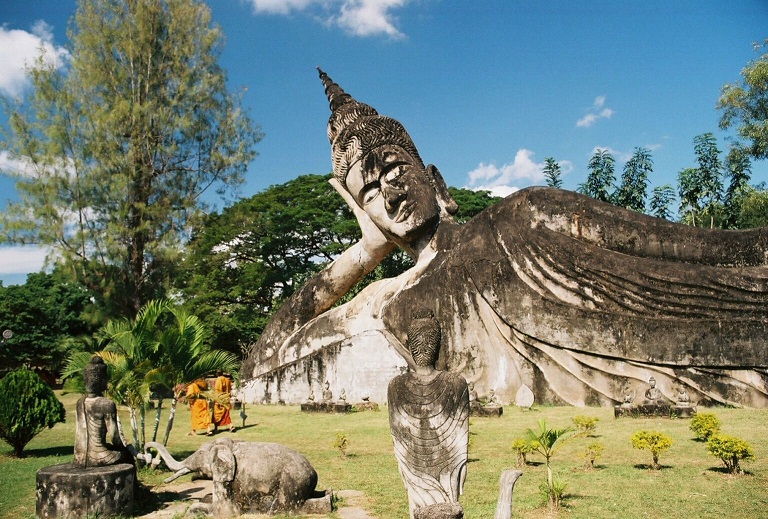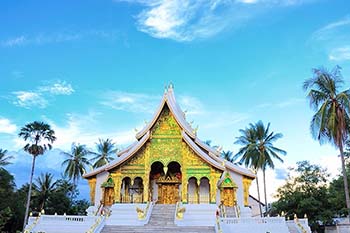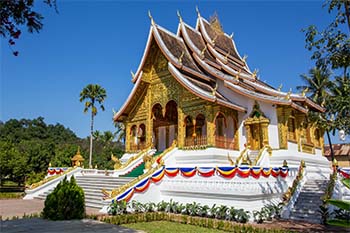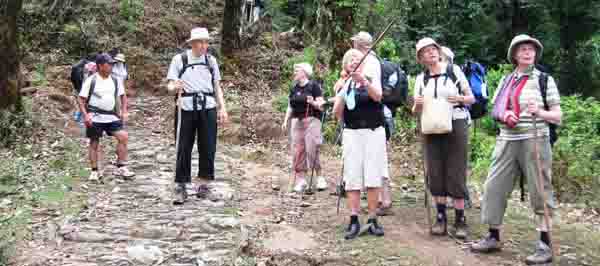Itinerary Detail
Day 01: Vientiane • Arrival in Vientiane
The capital city of Laos, Vientiane still feels like a sleepy city with relaxed charm, tree-lined boulevards, interesting wats and colorful markets. Tour the different highlights of the city, including Pha That Luang, a gleaming golden stupa which is perhaps most important national monument in Laos; Ho Pha Keo, the formal royal temple, now a museum with beautiful examples of Buddhist sculpture; Wat Si Saket; and Patuxai, a monumental arch inspired by the Arc de Triomphe, but executed with Lao motifs.
Day 02: Vientiane • Excursion to Buddha Park
This day's excursion is to visit an open-air museums, Wat Xieng Khuan (Buddha Park). This is a collection of whimsical but compelling statues of Buddhist and Hindu Gods.
Day 03: Vang Vieng
By vehicle from Vientiane to Vang Vieng with a boat trip on Nam Ngum Lake Drive to the north through the scenic province of Vientiane. The climate is pleasant and the views are nice, with mountains and cliffs along the first part of the journey.
Day 04: Phonsavanh
Visit Pha Thao Cave: Enjoy a short trek through rice paddies with a stop at a Hmong village in Ban Pha Thao and continue to visit the cave of Tham Pha Thao.
Day 05: Phonsavanh
Sightseeing in the Plain of Jars (Sites I and II) and Muang Khoun Spend the day visiting the famous Plain of Jars, a vast area extending around Phonsavanh from the south-west to the north-east. Mysterious and ancient, over 300 huge stone jars apparently carved out of solid rock are scattered around the plateau. The jars vary in size from 1 to 3.25 meters high and weigh up to six tons each. There are several different theories as to the purpose of the jars, which are estimated to be 2,500 to 3,000 years old. According to local legend, King Khun Chuang had them constructed in order to store wine for the celebration of his conquest of the province in the 6th century. Today's tour will focues on Site I and Site II, out of the many sites so far discovered.
Day 06: Luang Prabang
A slow journey along mountain roads with stunning views of the forested mountains, lush valleys and karst formations.
Day 07: Luang Prabang
Set between the Nam Khan and Nam Ou rivers, Luang Prabang is an enchanting town filled with historic temples and colonial style buildings. The entire town was declared a UNESCO World Heritage Site in 1995. Start the day at Wat Visoun (Wat Wisunalat). The oldest living temple in Luang Prabang, Wat Visoun dates back to 1513 and contains a collection of antique wooden Buddhas. Visit the nearby Wat Aham before continuing to Wat Xieng Thong, the crowning jewel of all the monasteries and temples in the city. Its many ornate buildings feature exquisite mosaic and gold-stenciled murals. From there, stroll down the main street of Luang Prabang, stopping at some of the many temples that line its sides, including Wat Sibounheuang, Wat Si Moungkhoun, Wat Sop and Wat Sene.
Day 08: Luang Prabang
Travel down the Mekong River to the steep limestone cliffs overlooking the Mekong and Nam Ou rivers, home to the Pak Ou Caves. These extraordinary caves are filled with Buddha images, of every style and material imaginable. On the return journey, stop at Ban Xang Hai, a local village famous for the production of lao lao, the local rice wine whisky.
Day 09: Luang Prabang












